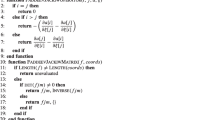Summary
Gauge invariance is discussed in the causal approach to QED. It is proven that the iterative construction of theS-matrix by the method of Epstein and Glaser can be carried out in such a way that perturbative gauge invariance holds true. The proof rests on a careful analysis of the process of distribution splitting. In case of nontrivial distribution splitting gauge invariance implies the Ward-Takahashi identities.
Similar content being viewed by others
References
J. S. Feldman, T. R. Hurd, L. Rosen andJ. D. Wright:QED: a proof of renormalizability, Lecture Notes in Physics, Vol.312 (Springer-Verlag, Berlin, 1988).
G. Scharf:Finite Quantum Electrodynamics, Texts and Monographs in Physics (Springer-Verlag, Berlin, 1989).
M. Dütsch, F. Krahe andG. Scharf: this issue, p. 871.
H. Epstein andV. Glaser:Ann. Inst. Henri Poincaré,29, 211 (1973).
Author information
Authors and Affiliations
Rights and permissions
About this article
Cite this article
Dütsch, M., Krahe, F. & Scharf, G. Gauge invariance in finite QED. Nuov Cim A 103, 903–925 (1990). https://doi.org/10.1007/BF02799235
Received:
Published:
Issue Date:
DOI: https://doi.org/10.1007/BF02799235




